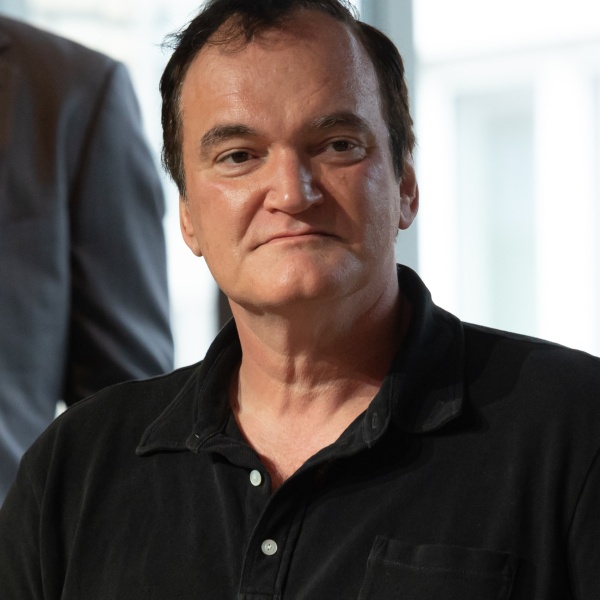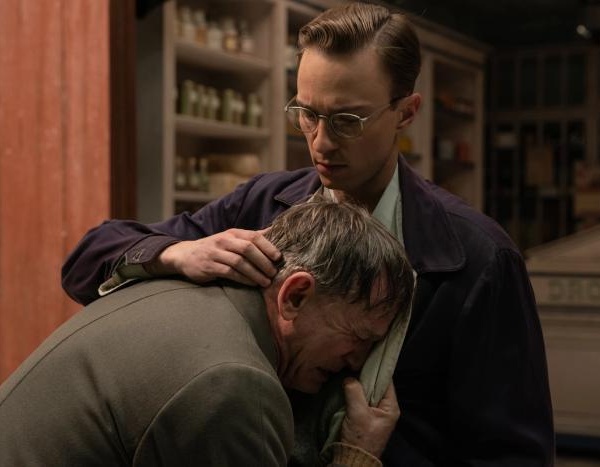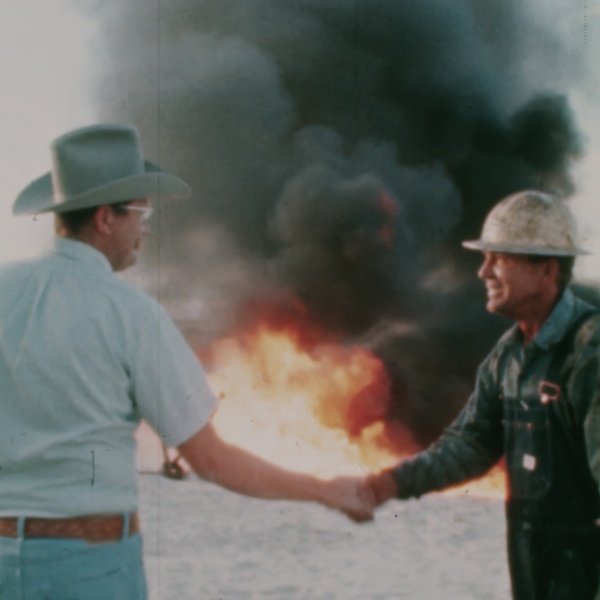
Joe Cornish‘s directorial debut “Attack the Block” has now been in U.S. theaters for about 10 days, having been rolling out in its native U.K. and elsewhere since May. We’re sure you’re fed up of the hype at this point, but it’s a very, very good film: a nifty, witty, extremely well-executed little genre picture. It’s also one that, like the best genre movies, has a socio-political backbone to it that in the last few days has suddenly struck a vein that few were expecting with the explosion of violence and looting that’s taken place in London since Saturday night.
First, a little context. This writer moved four months ago to Walworth in South London. About a 15-minute walk south of the Thames, It’s the birthplace of Charlie Chaplin, Michael Caine grew up here, and it’s made up, like virtually all of London, of a melting pot of races and religions. It would not be terribly unfamiliar to someone who’s seen “Attack the Block” — most of the film’s exteriors were shot on the mammoth Heygate Estate, a stone’s throw from my home (also the home to shoots for Clint Eastwood‘s “Hereafter” and Caine’s “Harry Brown“). Despite the rough exterior, I’ve come to love it. Last night, it was host to scenes the likes of which haven’t been seen in my lifetime.
A number of shops on Walworth Road, the main thoroughfare, were attacked and looted: mostly high-street chains like Boots and Foot Locker, but also smaller businesses, pawnshops and jewelers. Many, many areas suffered more: Peckham, another “Attack the Block” location, and Croydon in the South, Hackney in the East, Notting Hill and Ealing in the West and Enfield and Camden in the North. But worse may be to come: rumors are flying of more violence to come this evening (the kids are spreading news of meeting points via Blackberry Messenger), sirens swarm down the road, and there’s a tense atmosphere, like the moment before a lightning storm, when you leave the house. Which we’re advised not to do.

The Carpetright building in Tottenham, which burnt down in the first night of riots on Saturday.
The spark for the violence came from Thursday night: Mark Duggan, a 29-year-old resident of Tottenham, was returning to his home in a minicab, which was approached by members of a police firearms unit, and Duggan was shot and killed. Reports have been unclear, even four days later, but it appears that Duggan had a converted handgun on his person, although, despite initial claims from the police, it wasn’t fired or even ready to be used. Duggan’s family organized a peaceful protest in Tottenham on Saturday night demanding justice, but things swiftly turned violent, leading to a number of buildings in the area being torched to the ground.
Since then, things have escalated: nearby Enfield was also host to riots on Sunday, and then things spread even further on Monday. Unlike some cities, London’s haphazard, random nature means that there’s little ghettoization: multi-million pound houses can sit two streets away from huge housing estates, the violence in Chalk Farm was only the other side of the bridge from Primrose Hill where Jude Law and Ewan McGregor once made their home. Any political motivations, any seeking of justice, were long forgotten: instead a mix of violence targeted at police, looting — principally of stores containing sporting goods and electrical items — and general vandalism, including some fairly serious arson. It spread out to the suburbs and to other cities: Birmingham, Leeds, and, as we speak, Manchester, which seems to be the center of this evening’s events. What’s striking is that those seen in photos and videos of the “riots” could have walked straight out of Cornish’s film: overwhelmingly teenagers of both genders, in hoodies, often riding bikes.
“Attack the Block,” which has found a U.S. release in a manner both timely and unfortunate, considering its heroes are “hoodies,” who are currently being depicted as anything but heroes, opens with a scene that some viewers never quite recover from: the mugging of a young nurse on a quiet South London street. Rather than following the nurse, however (although she does return later), Cornish chooses to center on the criminals, a group of young, multi-ethnic teen boys. It’s a scene that turns some off the film entirely: depending on the viewer’s level of empathy, it can turn them against the characters entirely, no matter what redemption they find later on. It’s also a crucial scene in terms of what’s happening right now.

An impromptu installation in Peckham, South London, one of the areas worst hit by the riots (via @evie_adams)
The kids on the streets are doing something inexcusable: people are afraid of them, and they’re using that fear to act as they want without consequences (as this BBC radio interview with a group of young girls proves). It’s the same position that Moses, Pest, et al. are in at the beginning of Cornish’s film. Hoods up, they’re more imposing figures than their ages and frames belie, and like their real-life equivalents, they’re targeting their own communities: Sam turns out to be their neighbor in the council estate. But “Attack the Block” isn’t just a rock-em-sock-em alien-bashing movie. It’s a film about consequences. When Sam (Jodie Whittaker), the nurse, first confronts the kids again, they’re unrepentant. There’s no sense of community in the estate which finds itself under attack with Moses and his gang being seen as vicious little criminals. But over time, they step up, as Moses rejects the offer to become a drug dealer for the local kingpin and puts himself on the line to save his neighbors.
Cornish doesn’t sugarcoat his protagonists, but he doesn’t turn his back on them either. He’s talked about his issues with the demonization of the working class in films like “Harry Brown” and “hoodie-horror” “Eden Lake,” and wants to give the real-life equivalent of Moses a honest-to-god hero they can really root for: when was the last time a genre film from anywhere in the world had a hero from the underclass?
The point is, Moses and co. are not the feral monsters that they’ve been demonized as (the director’s been clear about the parallels between public perception of “hoodies” and the “gorilla wolf motherfuckers” of his film); they’re kids, as made clear by Moses’ Spider-Man bed-clothes. Kids behave badly when they have the chance and don’t comprehend the consequences of their actions; you did it, I did it, those on the streets of London are doing it, en masse, which is what makes it particularly shocking. If you treat them like criminals (and there’s no doubt that the mistrust of the police, justified or not, is at the heart of what’s going on), they might as well act like criminals because they’ve got nothing to lose. And the colossal cuts to youth services in the U.K. in recent months has only exacerbated things: it’s sunny, it’s the school holidays and they’ve got nothing else to do.
A shopfront near this writer’s home, Walworth Road, London
Do I feel sympathy for the rioters? No. They’re vicious morons and deserve everything that they’ve got coming to them. They’re attacking places I love, and more incomprehensibly, the businesses and livelihoods of those in their communities. But do I feel empathy for them? Absolutely. They’re kids from the poorest neighborhoods in London, given the opportunity to take what they’ve been told that they should aspire to, but can never afford.
I’m not an angry person, by nature. But waking up this morning, I wanted, like Moses, to grab the nearest sturdy stick to hand and head out to defend my ends. But that isn’t the answer. It’s a tiny minority of Londoners who’ve been burning and looting: never more than a few hundred at each incident, often fewer. An entire generation or class shouldn’t be demonized as a result, and signs of vigilante mobs looking for vengeance on “blacks” and “Pakis” already cropping up in London are not encouraging.
After another recent terrible event (one at which, however damaging this is to the national psyche, the British riots pale in comparison), the massacre in Norway, Prime Minister Jens Stoltenberg quoted a survivor in saying, “If one man can create that much hate, you can only imagine how much love we as a togetherness can create.” There are encouraging signs: in a city where few know their neighbors, watching strangers coming together to aid the clean-up effort this morning was a beautiful thing. Hopefully it’ll mean a more united community, not a more divided one, and not shutting the dispossessed out of that — like Cornish’s film, not dismissing them as unknowable and feral — is a good way to prevent these acts from happening again.







